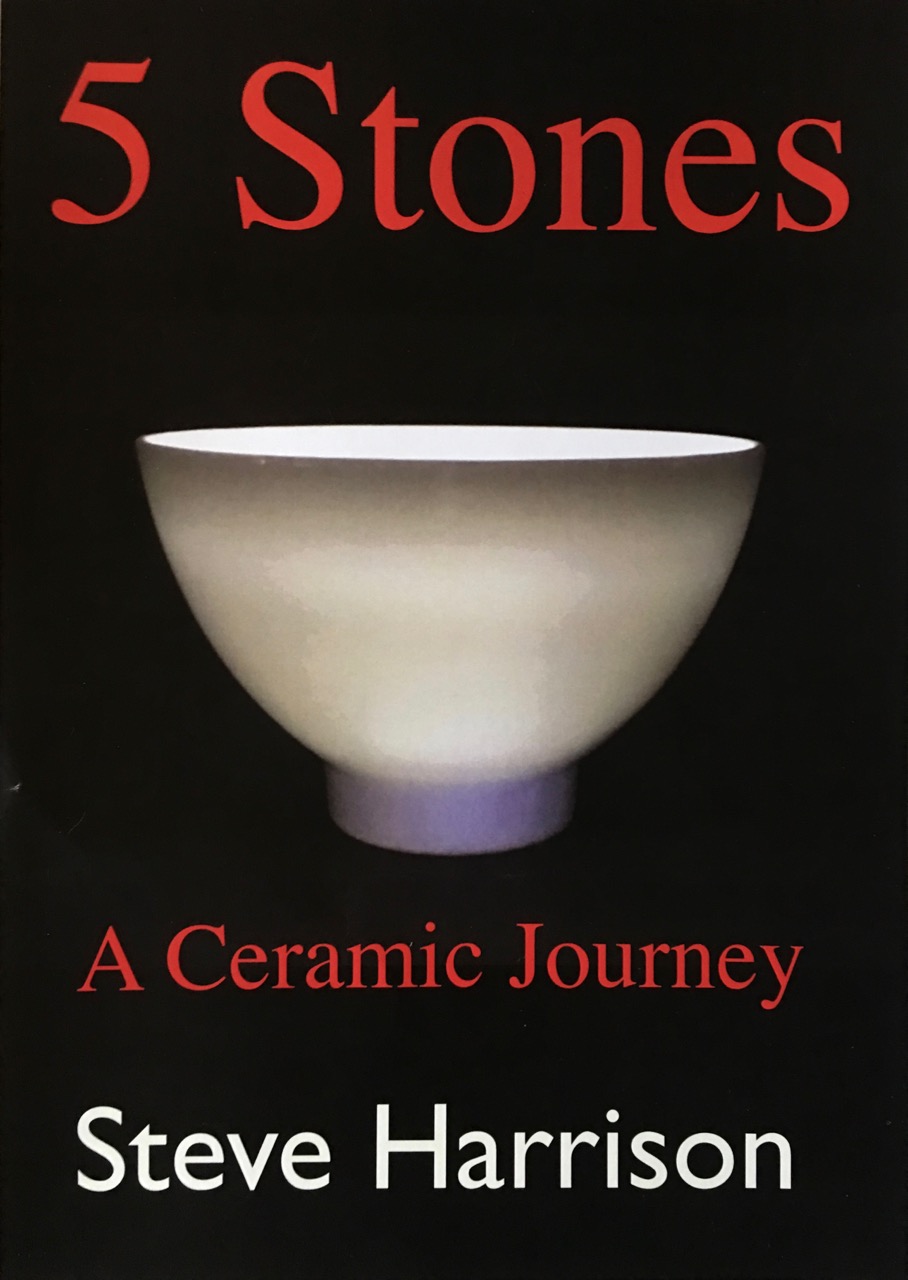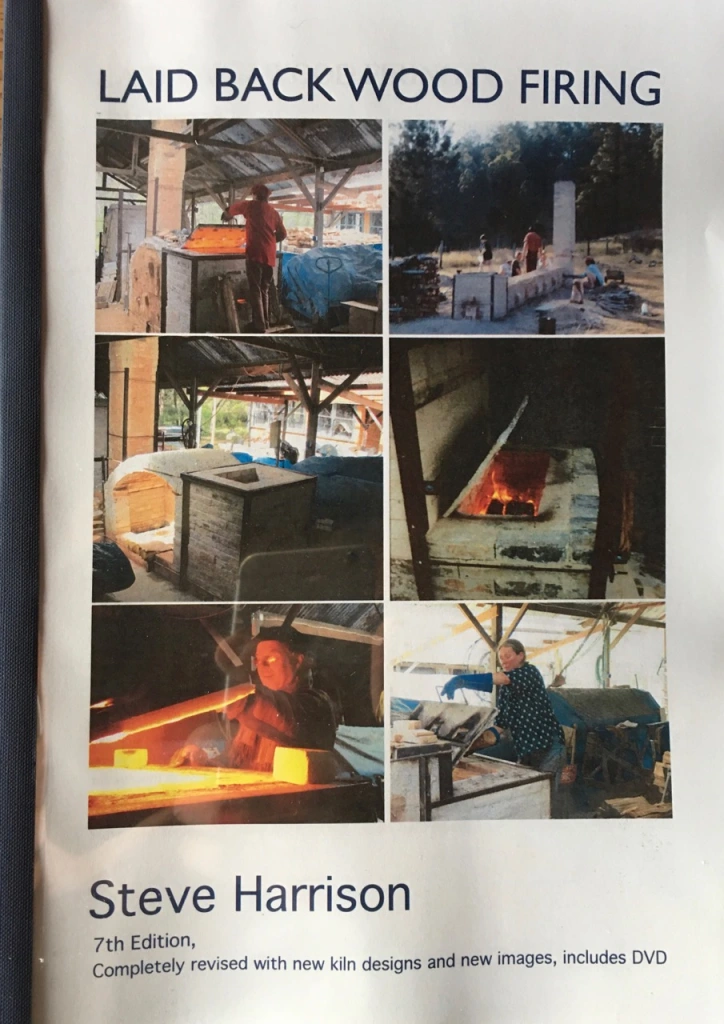I have listed all my current ceramic books available for purchase below.
Please feel free to look down the list to see if there is anything that might interest you. These books are available for purchase in hard copy only at the price listed + postage costs. Please email me to enquire about the cost of postage.
Payment can be made locally by direct deposit into our bank account, or using PayPal.
For overseas customers, the cheapest way to pay is using PayPal.
<hotnsticky@ozemail.com.au>

5 Stones, A ceramic Journey
My sericite travels, the narrow road to the deep white north. A 15 year exploration, 2002 to 2017. $70
This new printing is in soft cover. It is printed in a 10 point typeface on 80 gsm paper. The new printing is in full colour, soft cover and 155 pages. This A4 format reduces the thickness and weight and therefore cost of postage.
This new revised and enlarged, but lighter edition $70 + P&P
I can’t imagine a book like this being a big seller, as there is no sex and only one murder!
5 Stones, details my recent research into single stone porcelain. 20 years ago, I discovered a white porcelain stone near where I live. It made me think about where else porcelain has been discovered and when. Over the years, I have travelled to each of the places in the world where porcelain was originally discovered/invented independently from first principles and found that they all had something in common, and that thing was a stone called ‘sericite’. It turns out that originally, porcelain wasn’t made from the white clay at all. Kaolin wasn’t involved. All the original porcelains were made from a special type of stone called mica.

Laid Back Wood Firing.
The 7th edition is finally here!
107 pages, 15 illustrations, 12 kiln plans, + a DVD with 120 colour images and 30 minutes of video illustrating the text. $50 + p&p.
This book was first published in 1977 in an edition of 500 copies in a green cover and reprinted soon after in 1978 in an edition of 2000 in a blue cover. This edition has been updated, revised and considerably enlarged, in fact almost triple the original publication. Although it is my intention that it should still remain a small kiln-side handbook as a guide for the potter who has not fired a down draught fire box (Bourry) kiln before, or has little experience of it. If you have not seen a kiln with a down draught firebox before it may seem strange to be told that the fire burns ‘up side down’. The wood being introduced at the top of the firebox, the fire is suspended half way up in the air, and the flames leaving at the bottom, underneath the wood, to pass down into the kiln. This is however exactly the case when the fire box is burning at full fire and I therefore felt that a small booklet that introduced and explained the concept might have some currency. That was 43 years ago and it seems I was right, with almost 4000 copies sold.
This little book (as it has now become) also attempts to shed some light on the history and development of the up side down fire box, although only briefly, as its main function is as a guide on how to understand the firebox and offer possible explanations as to what may happen to you during a firing and what you might do about it to keep control of the process. I also offer a few kiln plans at the end to illustrate the kinds of kilns that might be fired by the down draught firebox. This section is by no means exhaustive and this book is certainly not meant to be a step by step guide on how to cut and lay firebricks, or how to build a kiln.
This book is now available in a French language edition in France. It has also been translated into Korean for the Korean language edition.
.

ROCK GLAZES
Rock Glazes, Geology and Mineral Processing for potters. 54 pages, 37 images, 12 illustrations inc. CD of colour images and short video clips illustrating the text. $40 + p&p
My principal reason for collecting and processing my own raw materials, an interest that I have pursued over the last 45 years, is two-fold. Firstly, I have a deeply held belief in a theory of locality, which I call the ‘location specific event’ which, if you have read any of my other writings, you will be familiar with (see Australian Woodfiring). So there is no need to elaborate on it here. Secondly, it is to strike a blow against the trend towards a global pottery style, where a majority of potters around the world end up using all the same ceramic ingredients. An oligopoly of ceramic material manufacturers using the same colours, frits etc.
China clay is sourced from New Zealand, bentonite from Mexico, nepheline syenite from Canada. Where one ingredient is found to be very good, it is shipped all over the world and everyones work has the same basic look and feel. I am happy to seek out ‘inferior’? local raw ingredients for my pots, for my food and for my wine. I think its called character. It certainly won’t be the best in the world, it may not even be very good in comparison to the ‘best’ but it’s what happens here, with this stuff. It’s my belief that if you work with a material long enough you will find a way to express its personality, and beauty.
Some of the chapters include; A Brief Introduction to Geology for Potters, An Overview of Rock Crushers, Flotation-A Remarkable Method Of Refining Useful Minerals. Empirical Blending, a fast method of establishing the alumina silica ratio of your rock, and finding the ‘sweet-spot’ recipe that will give the best result from your rock. There is a basic introduction to Glaze Chemistry and an A3, fold out, colour coded, Periodic Table is included in the back.
This book is available in Korean translation.

FIBRE REINFORCED CLAY BODIES
20 pages, 16 images OUT OF PRINT
This book details my research into reinforcing both sculptural and porcelain clay bodies with both paper and ceramic fibres. There are recipes for mixing your own batches of clay as well as detailed descriptions of how they might be formed and fired.
.
.

THOROUGHLY MODERN MILLING
13 pages, 1 image, inc. 7 pages of A3 size detailed engineering drawings.
OUT OF PRINT
This is not a book. This is a package of detail engineering drawings and several pages of printed instructions. It details how a small ball mill might be built. The ball mill is of a size that might be suitable for use in an artist potters workshop. There are step by step instruction and 7 pages of A3 detailed engineering drawings.
This package doesn’t explain how to use a ball mill, how to load it correctly or how to prepare the stone grit for milling. Those topics are all covered in my book on Rock Glazes.
.

AUSTRALIAN WOODFIRING
122 pages, 85 images & 13 kiln plans inc. a CD of colour images.
Out of Print
This book is a personal interpretation of the development of stoneware wood firing technology as practiced by artist-potters in Australia during the fourty years from the early nineteen fifties through to the early nineteen nineties. It deals with the history, the major personalities and their influences, the technologies used and their origins, the kiln designs evolved and the firing techniques developed. An important factor in the development of wood firing by artist potters during this period was the particular nature of the Australian native clays and timbers used by the pioneering figures, and their attempts to come to terms with the technology needed to utilise these endemic resources aesthetically.
The evolution of new styles has been based on imported European and Oriental archetypes interfacing with Australian native materials and social attitudes. Up to the present time there has not been a concerted attempt to detail the technology of stoneware wood firing. The central theme of this book is the analysis of the technologies involved in the creative wood firing process. I have been lucky enough to accumulate during my working lifetime, numerous illustrations and photographs of a variety of wood fired kilns, which, to the best of my knowledge are collected together and published here for the first time.

You must be logged in to post a comment.